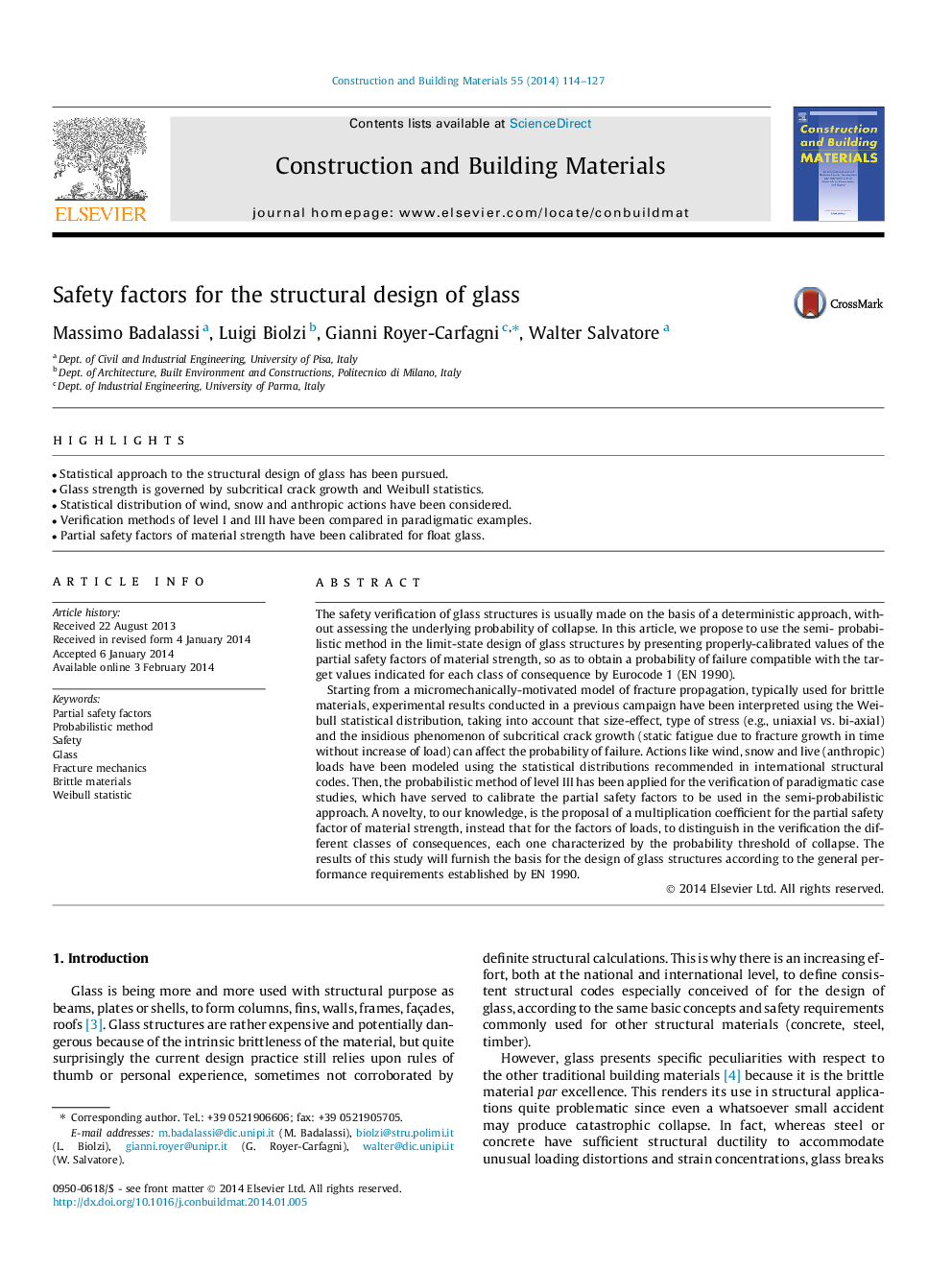| کد مقاله | کد نشریه | سال انتشار | مقاله انگلیسی | نسخه تمام متن |
|---|---|---|---|---|
| 257814 | 503601 | 2014 | 14 صفحه PDF | دانلود رایگان |
• Statistical approach to the structural design of glass has been pursued.
• Glass strength is governed by subcritical crack growth and Weibull statistics.
• Statistical distribution of wind, snow and anthropic actions have been considered.
• Verification methods of level I and III have been compared in paradigmatic examples.
• Partial safety factors of material strength have been calibrated for float glass.
The safety verification of glass structures is usually made on the basis of a deterministic approach, without assessing the underlying probability of collapse. In this article, we propose to use the semi- probabilistic method in the limit-state design of glass structures by presenting properly-calibrated values of the partial safety factors of material strength, so as to obtain a probability of failure compatible with the target values indicated for each class of consequence by Eurocode 1 (EN 1990).Starting from a micromechanically-motivated model of fracture propagation, typically used for brittle materials, experimental results conducted in a previous campaign have been interpreted using the Weibull statistical distribution, taking into account that size-effect, type of stress (e.g., uniaxial vs. bi-axial) and the insidious phenomenon of subcritical crack growth (static fatigue due to fracture growth in time without increase of load) can affect the probability of failure. Actions like wind, snow and live (anthropic) loads have been modeled using the statistical distributions recommended in international structural codes. Then, the probabilistic method of level III has been applied for the verification of paradigmatic case studies, which have served to calibrate the partial safety factors to be used in the semi-probabilistic approach. A novelty, to our knowledge, is the proposal of a multiplication coefficient for the partial safety factor of material strength, instead that for the factors of loads, to distinguish in the verification the different classes of consequences, each one characterized by the probability threshold of collapse. The results of this study will furnish the basis for the design of glass structures according to the general performance requirements established by EN 1990.
Journal: Construction and Building Materials - Volume 55, 31 March 2014, Pages 114–127
